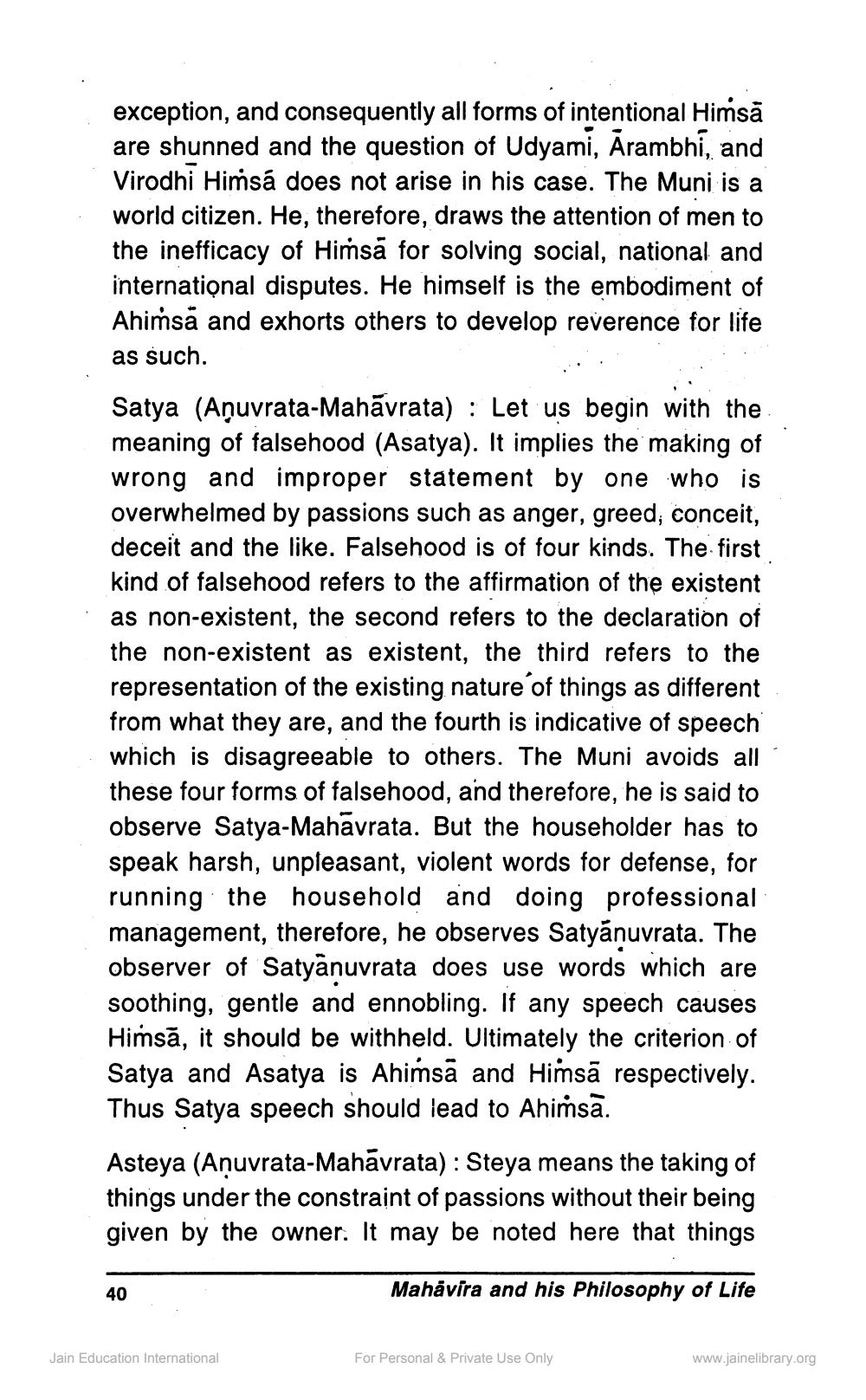________________
exception, and consequently all forms of intentional Himsā are shunned and the question of Udyami, Arambhi, and Virodhi Himsá does not arise in his case. The Muni is a world citizen. He, therefore, draws the attention of men to the inefficacy of Himsā for solving social, national and international disputes. He himself is the embodiment of Ahiṁsā and exhorts others to develop reverence for life as such.
Satya (Anuvrata-Mahāvrata) : Let us begin with the meaning of falsehood (Asatya). It implies the making of wrong and improper statement by one who is overwhelmed by passions such as anger, greed, conceit, deceit and the like. Falsehood is of four kinds. The first kind of falsehood refers to the affirmation of the existent as non-existent, the second refers to the declaration of the non-existent as existent, the third refers to the representation of the existing nature of things as different from what they are, and the fourth is indicative of speech which is disagreeable to others. The Muni avoids all these four forms of falsehood, and therefore, he is said to observe Satya-Mahavrata. But the householder has to speak harsh, unpleasant, violent words for defense, for running the household and doing professional management, therefore, he observes Satyanuvrata. The observer of Satyānuvrata does use words which are soothing, gentle and ennobling. If any speech causes Himsā, it should be with held. Ultimately the criterion of Satya and Asatya is Ahimsā and Himsā respectively. Thus Satya speech should lead to Ahiṁsā.
Asteya (Anuvrata-Mahāvrata): Steya means the taking of things under the constraint of passions without their being given by the owner. It may be noted here that things
Mahavira and his Philosophy of Life
Jain Education International
For Personal & Private Use Only
www.jainelibrary.org




